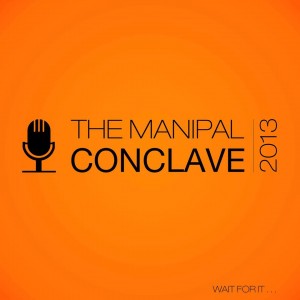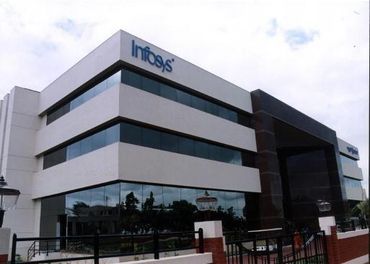The Bank, which was established on May 19, 1913 with a capital of Rs. 20 lakh, started its commercial operations from October 2, 1913. This was a boon to the people of the State and the business community, in particular to the traders in the old Mysore State. Thus the opening of the Bank of Mysore was a milestone in the economic history of the Old Mysore State and its steady prosperity over the following years. It was considered a privilege to have an account with Mysore Bank !
by V. Krishna Moorthy
The erstwhile Mysore State’s first and earliest State-sponsored bank, The Bank of Mysore Ltd., was established in the second decade of the last century in 1913 by the then Maharaja Sri Krishnaraja Wadiyar IV. It was the then Dewan of Mysore, Sir MV as the Chairman of the State’s Banking Committee, who was instrumental in the establishment of the bank to cater to the financial needs of the erstwhile Mysore State.
The Bank, which was established on May 19, 1913 with a capital of Rs. 20 lakh, started its commercial operations from October 2, 1913. This was a boon to the people of the State and the business community, in particular to the traders in the old Mysore State which used to have surplus production of agricultural and plantation products like Copra, Coffee, Silk, Chillies etc., which were in great demand elsewhere and manufacturing was virtually absent in those times. Thus the opening of the Bank of Mysore Ltd. was a milestone in the economic history of the Old Mysore State and its steady prosperity over the following years. It was considered a privilege to have an account with Mysore Bank !
While in the initial stages, the Bank’s service area was confined to the major towns in the old Mysore State like Arsikere, Bhadravathi, Channapatna, Chikmagalur, Chintamani Chitradurga, Davangere, Fort (Bangalore), Hassan, Kolar, K.R. Nagar, Mysore, Oorgaum, Sagar, Sakleshpur, Shimoga, Tumkur, Tiptur etc. (all agri-produce centres or trade centres). Later, the Bank opened a few branches in prominent business centres like Bombay and Madras and surprisingly there were two more branches in the border State of Andhra at Kuppam and Madanapalle because of the Bank’s old business connections with customers in those areas. Kuppam in particular was an important centre for export of sandal oil in those olden days !
The Bank celebrated its Silver Jubilee in a grand manner in 1938 under the Chairmanship of B.K. Garudachar, since the first Chairman of the Bank K.P. Puttanna Chetty, who served the Bank as Chairman since its inception, died just a few months before the celebrations were scheduled for Dec. 2, 1938.
It was a grand affair and the branches that were in operation at that time, including the Mysore Main Branch at Ashoka Circle, proudly possesses the silver memento that was given to them. The Bank had just 19 branches covering eight southern districts of the State when it celebrated its first 25 years of existence. A Silver Jubilee Souvenir was also brought out on the occasion. The Bank had just about Rs. 2.51 crore of deposits and Rs. 1.91 crore of advances. It had a staff strength of 123 at Head Office (including Bangalore Main Branch) while all the branches put together had a staff of 158. In all, the Bank had 403 staff of all categories. With a share capital of Rs. 20 lakh, over a period of 25 years, the Bank had paid a total dividend of over Rs.52.20 lakh to its shareholders.
Following independence and the formation of the Indian Republic, the Imperial Bank of India was converted into State Bank of India (SBI) under the State Bank of India Act. Since there were very few branches of SBI and its spread was limited to major cities and big towns, with virtually no presence in the erstwhile Princely States which had established thriving banking activity, the Central government came out with the State Bank of India (Subsidiary Banks) Act 1959 and Subsidiary Banks’ Regulations,1959. Under the above law, eight government banks of the erstwhile Princely States were brought under the above legislation to be made subsidiaries of State Bank of India. Thus the Bank of Mysore Ltd., became the State Bank of Mysore, since 1960.
The Bank in its new avatar, State Bank of Mysore (SBM) has just completed the first 100 years of its eventful service to the public, transforming itself as one of the strong and popular banks in the whole of Karnataka and elsewhere also with branches spread across the country, in the process absorbing some of the smaller banks into its fold. The Bank continues to be a subsidiary of SBI though it is given a respectable nomenclature — Associate Bank — since the parent gets a better reckoning and image as a Group among the banking fraternity, both in terms of resources and performance.
The Silver Jubilee that the Bank celebrated in a grand manner in 1938 was the first and the only celebration the institution could do in the last 100 years. When the Bank completed its 50 years in 1963, it could not celebrate its Golden Jubilee in any appreciable manner as Canara Bank did since the Bank was in a transition stage and had recruited its first Probationary Officer (PO) under the common recruitment of POs for State Bank of India and its subsidiaries. The local management also did not assert itself since the Chief Executive of the Bank, then called General Manager, was from State Bank of India.
When the Bank completed its 60 years of service in 1973, not much in the nature of a Diamond Jubilee celebration happened, while a sister institution Canara Bank held its Diamond Jubilee in a grand manner in 1969 taking a march over other banks in the State both in its spread and image among the general public. When it completed 75 years in 1988, the opportunity of a Platinum Jubilee was also thrown away by the Bank without any celebrations. The Mysore Main Branch, however, had a celebration with two events in conjunction with Nehru Centenary: a public lecture by M.R. Srinivasan, eminent nuclear scientist and Chairman of the Atomic Energy Commission, at the CFTRI auditorium and a Book exhibition on Nehru at its premises as part of the Platinum Jubilee celebrations when the present writer headed the branch. The event was covered by the local station of AIR and this paper also.
Mysore Bank, as it is popularly known, entered the centenary year in October 2012 and completed 100 years of its service on 2nd October 2013. It is a pity that in the last 12 months of its centenary year, the public did not see any indication outwardly that the institution except on the date calendars of the Bank. It is not an everyday affair that always such occasions come either for individuals or for institutions. It is for the authorities concerned at the helm of affairs to use the occasion to motivate its thousands of employees both present and past who have contributed to its growth, spread over nearly 800 branches across the State and several other States for renewed better performance, particularly when the competition in the sector is getting severe with more private banks entering a banking space. It should also serve as a sense of satisfaction to millions of its existing customers for banking with such a long-standing financial institution and is also an invitation to new customers, both individua
l and corporate, to bank with its branch network across the country.
It is to be remembered that three such lifetime events for the institution in the past — like the Golden Jubilee in 1963, Diamond Jubilee in 1973 and Platinum Jubilee in 1988 —were not taken advantage of to propagate the Bank’s achievements and services and missed excellent opportunities on some pretext or other and as a measure of economy. The centenary year of 2013 has also taken the same route. Even though the performance of the Bank for the centenary year 2013 was not so bad compared to its other associates, and peers, except for the rising NPAs, in a centenary year, its published Annual Report and Accounts for the year ending 31st March 2013 was a drab and dull affair in black and white, while in the past fifty years, the Annual Reports used to be colourful reflecting the dynamism of the Bank in its services.
But alas, there was some good news at least for the city’s public who bank with various branches of State Bank of Mysore, and its lakhs of customers and thousands of employees both present and retired. The local management had organised a Centenary Walk from the North Gate of the Mysore Palace to the Deputy Commissioner’s office on 2nd October, 2013 — at least something to remember that Mysore Bank completed 100 years of its service to the public !
[The writer can be reached via: moorthy_vk@rediffmail.com]
source: http://www.starofmysore.com / Star of Mysore / Home> Feature Articles / October 21st, 2013






